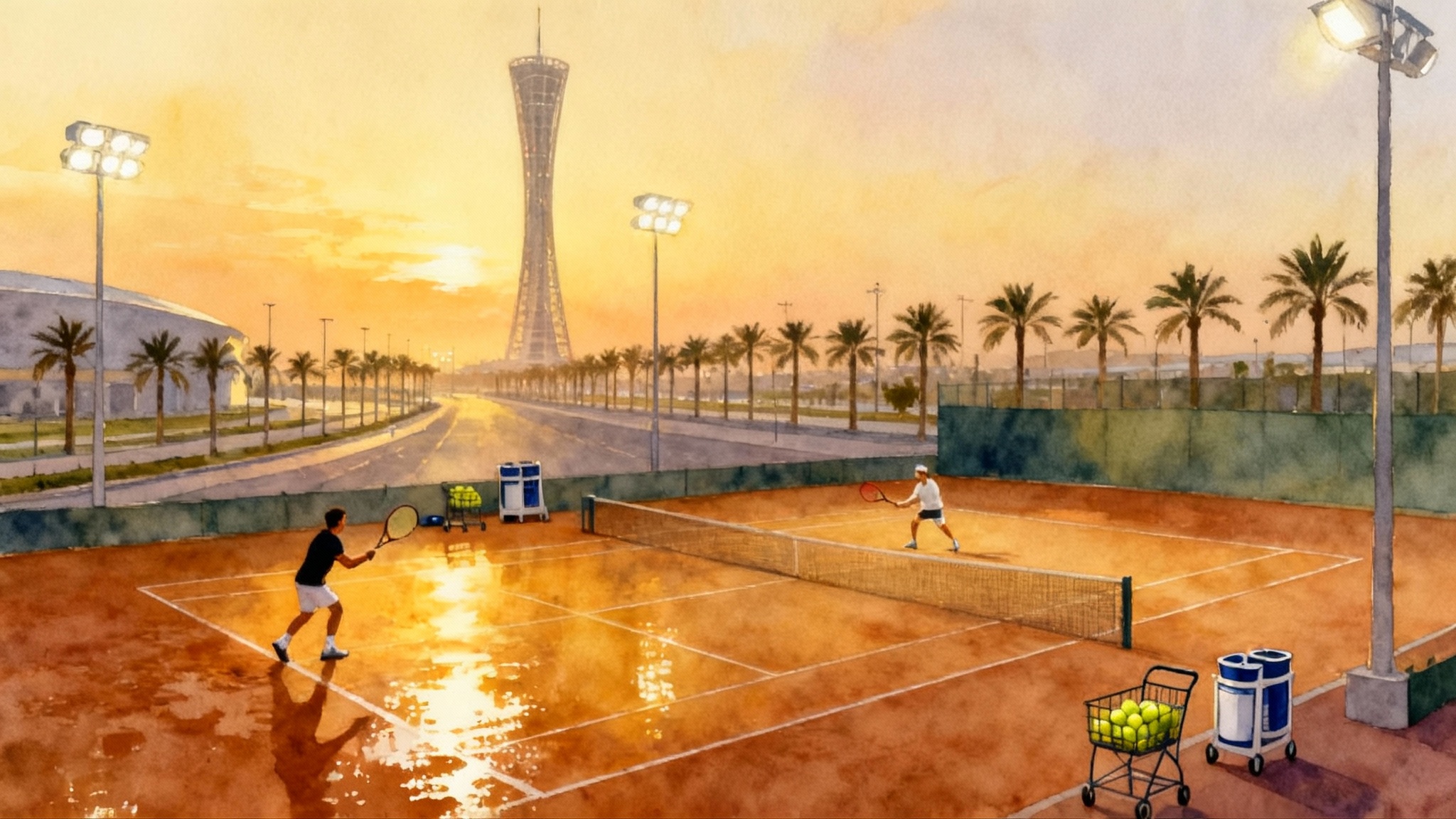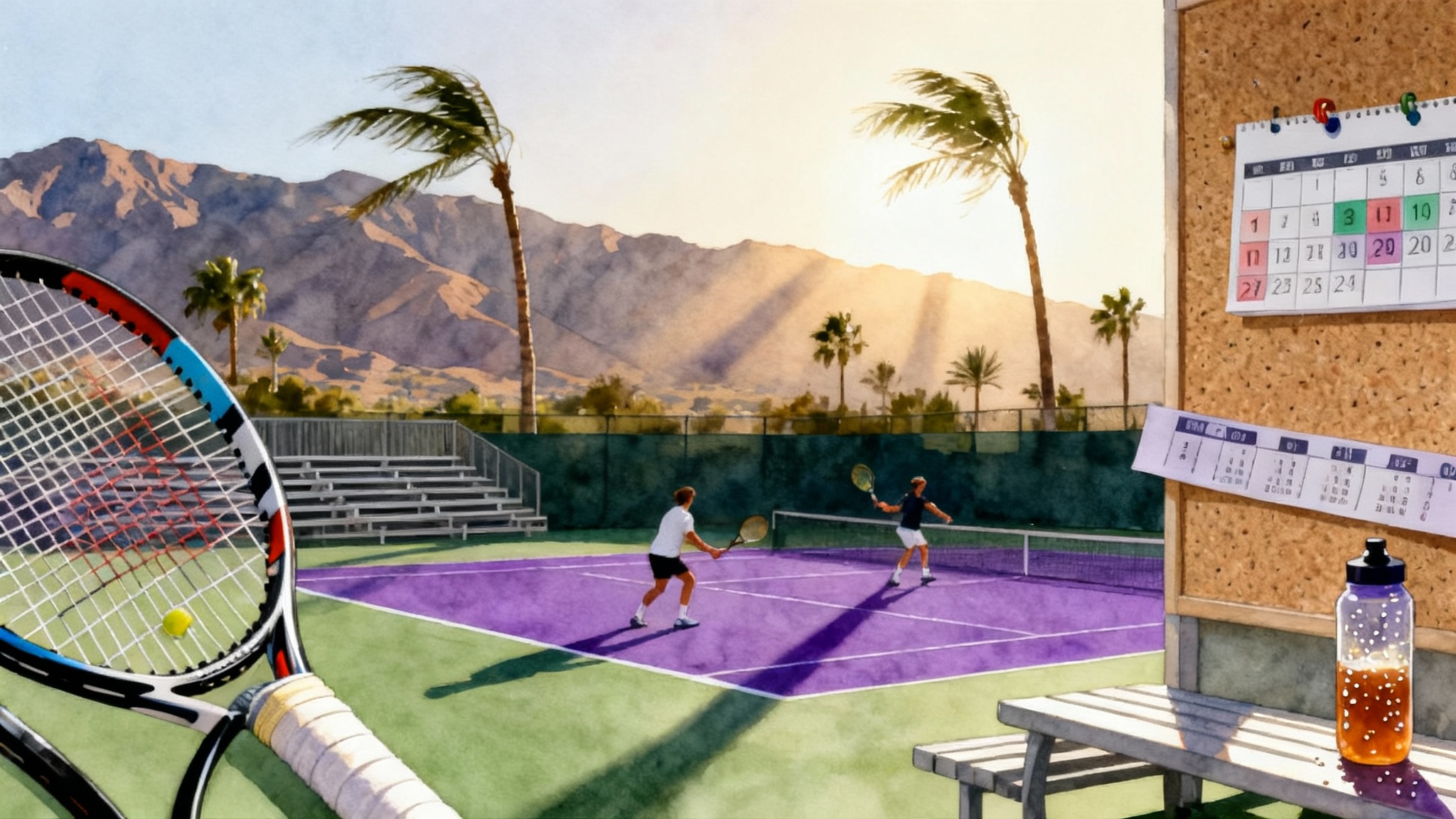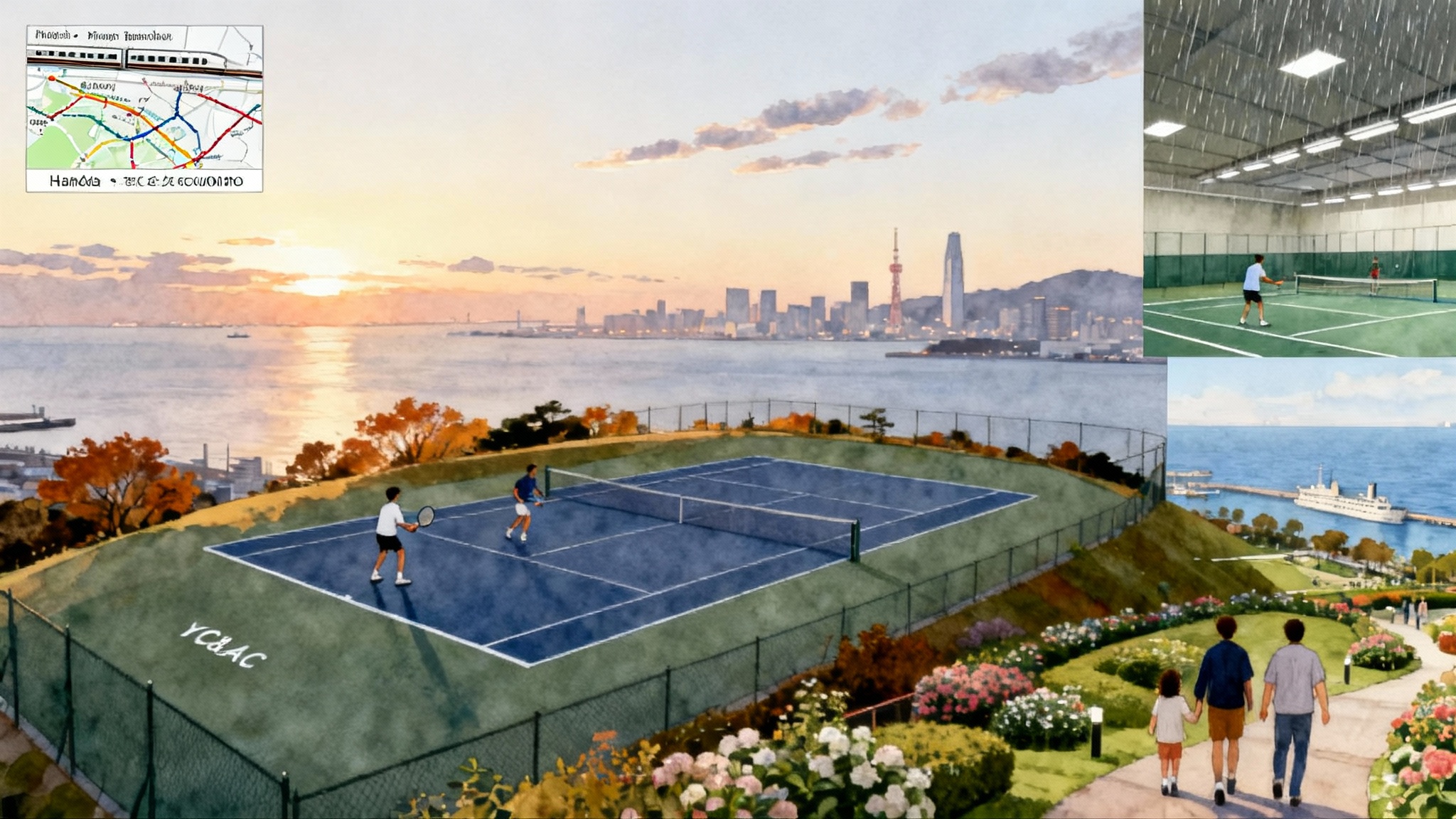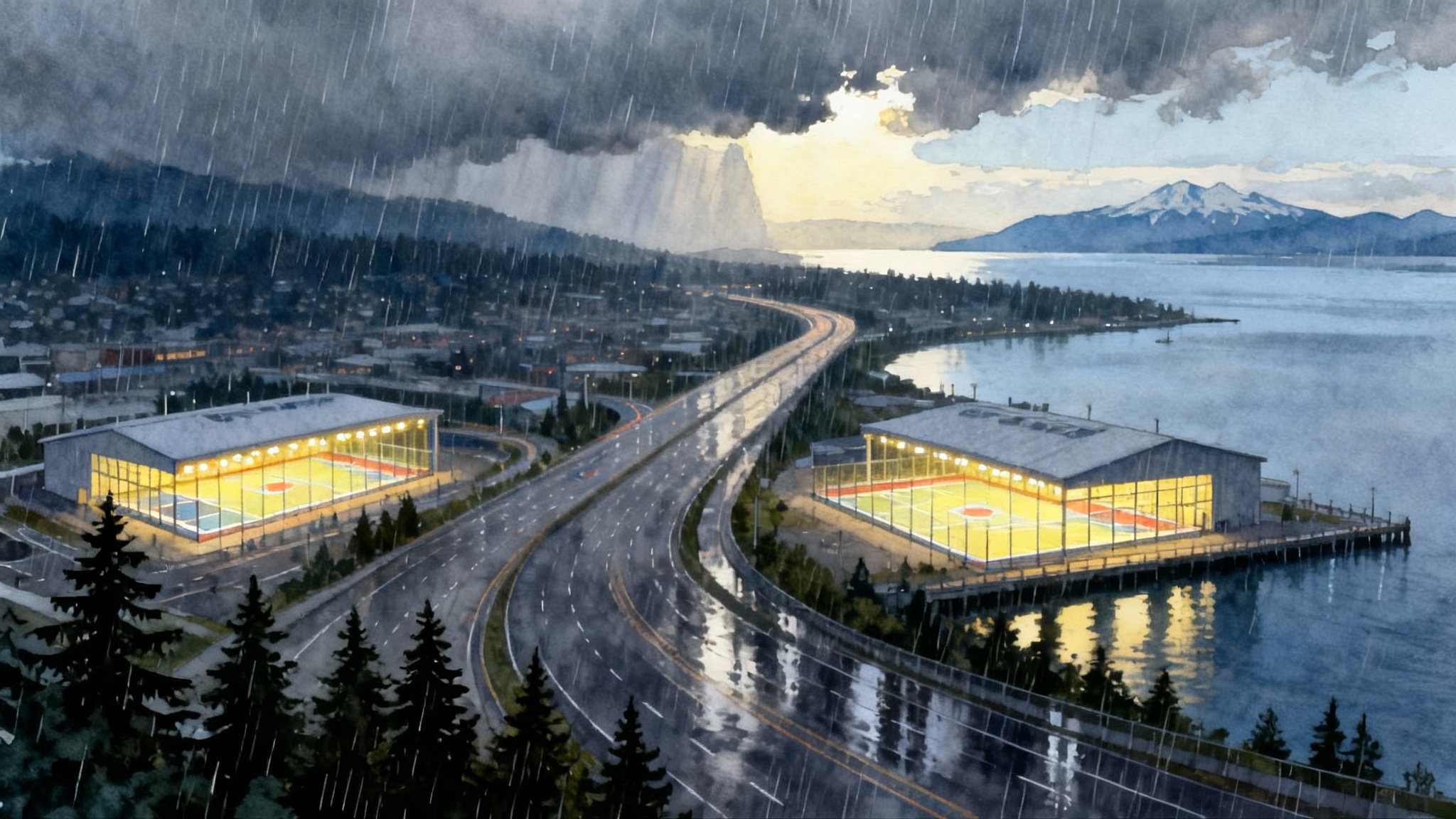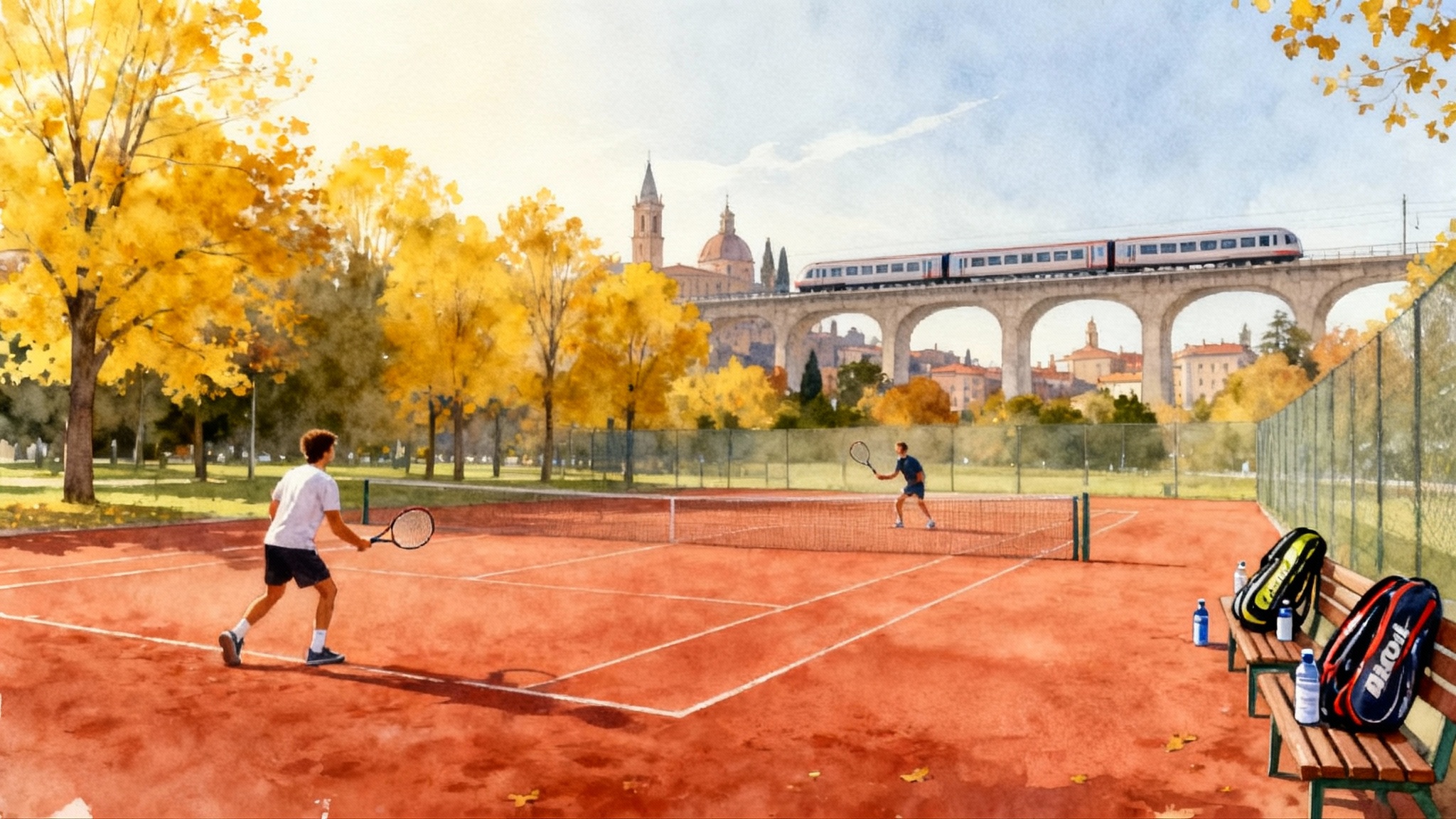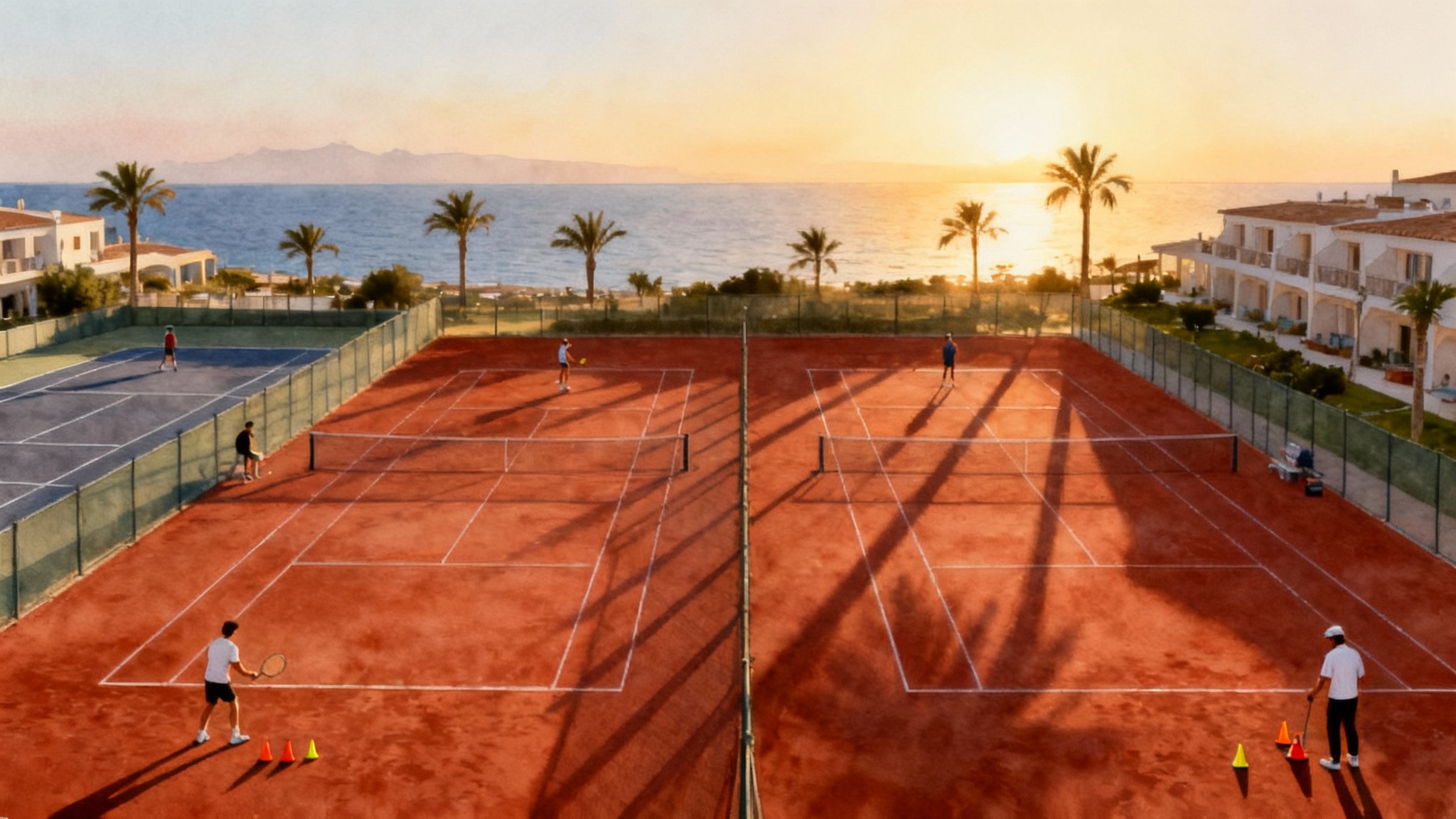Malta Winter Tennis 2025–26: Weather-Safe Training Guide
Plan a climate-smart winter tennis block in Malta from November to March. Learn how to work with wind and short showers, where to book courts, how to build one or two weeks around IK Tennis Academy, plus flights, budgets, and match play.
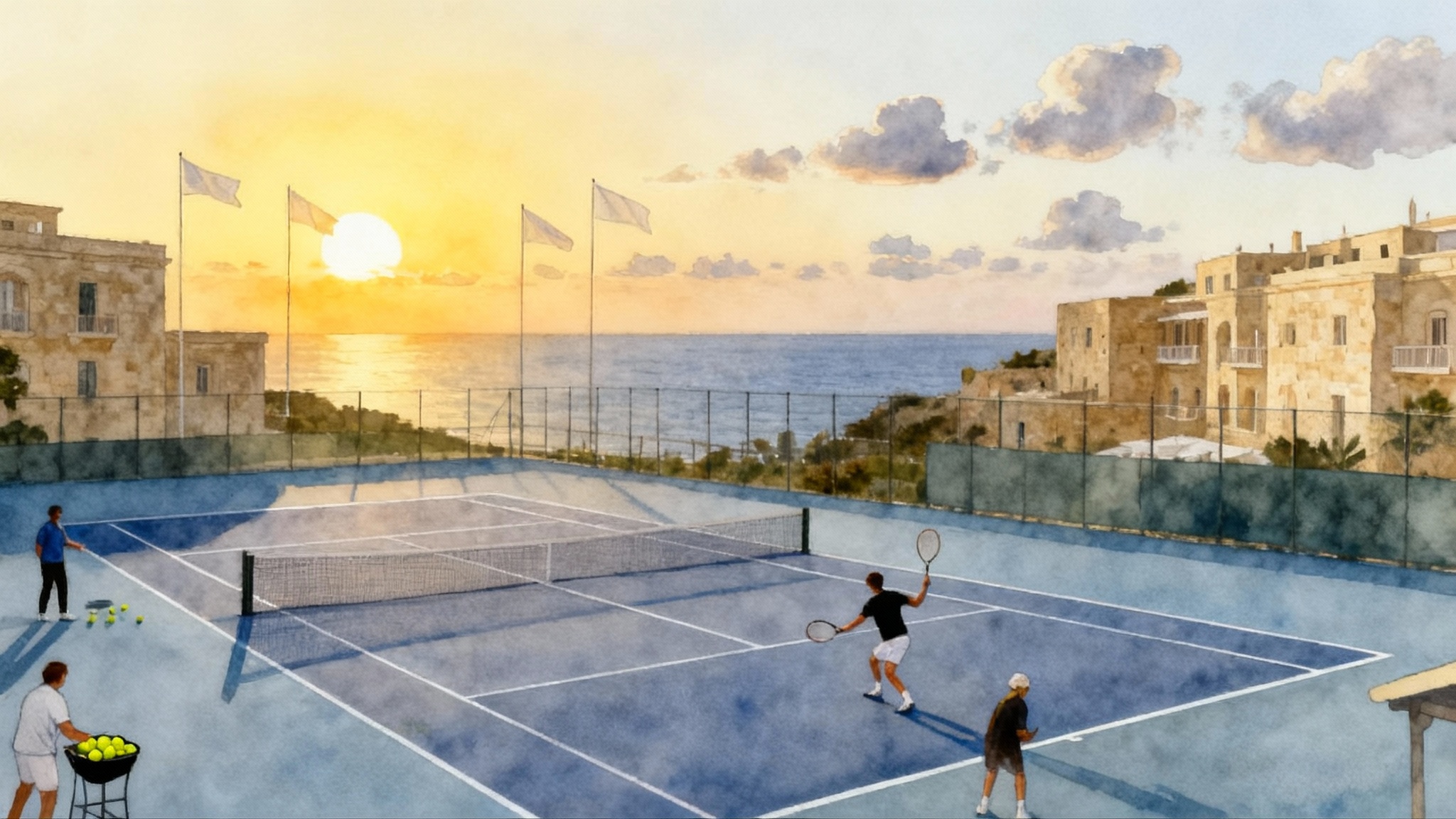
Why Malta is a smart winter base for tennis
If you want volume, match rhythm, and a pleasant outdoor setting without losing days to cold snaps, Malta is a strong winter choice. Winter here is mild, with daytime highs that encourage two sessions a day and evenings comfortable enough for lights-on drilling. Rain usually shows up as short bursts rather than all-day washouts, and there is a dependable mix of sun and cloud that keeps hard courts from baking. For a quick reality check on temperatures and rainfall across the winter months, study the Met Office overview of Malta weather. If you want a Mediterranean comparison, see our Crete shoulder-season tennis guide.
Think of Malta as a compact practice campus. The island’s size keeps transfers short, so you spend more time on court and less time in traffic. You can base in one neighborhood, walk to groceries and recovery, and taxi ten to twenty minutes to a match venue. That logistics simplicity is your hidden performance enhancer.
When to go: November to March, by goal
Every winter month in Malta is playable. The best month for you depends on what you want out of the block.
- November: Great for volume with some early-season sharpness. Sea is still relatively warm, which makes recovery swims plausible. Expect a handful of breezy days. If your priority is aerobic base and pattern work, book here.
- December: Pre-holiday weeks are quiet, prices can be friendly, and courts are easier to book in the mornings. Shorter daylight means a premium on lights. Keep sessions crisp and stack your heaviest load early in the week.
- January: The coolest month, and one of the breezier ones. Plan around wind windows, add extra footwork and serve targets on gusty days, and use indoor options if needed. Match play is less frequent, so this is a good time for technical upgrades and strength work.
- February: Still cool, with the highest odds of strong fronts. It is also quiet on the tourist side. Embrace flexibility: morning sessions on the lee side of buildings, afternoon gym or video reviews if a squall rolls through.
- March: The daylight stretch you feel on day one. Warmer afternoons, more reliable evenings, and more competitive options. If you want a blend of training and match play, March is ideal.
Wind and showers: how to keep your plan on track
Malta’s tennis winter is less about beating rain and more about playing smart with wind.
- Court orientation: On blustery days, pick courts with a building windbreak on the north and west edges. If your venue has a multi-court block, ask for a middle court to reduce crosswind.
- Gear tweaks: Bring two kinds of strings and two tensions. Use your usual tension for calm days and a two to three percent lower tension on gusty days for a bigger hitting window. Bring a reel of overgrips, a light windbreaker, rosin if your hands run dry, and a soft cap that will not billow.
- Session design: On windy mornings, front-load serves, returns, and first-ball patterns. Use constraints that reward height and margin, like deep crosscourt plus line change only on a short ball. Finish with transition and overheads with the wind at your back to simulate closing points.
- Rain scripts: Most winter showers are brief. Have a thirty-minute indoor circuit written down: miniband activation, jump rope, medicine-ball throws, shadow swings with tempo cues, and a short mobility flow. If your base has a small gym, place these items there on day one so you are not scrambling when clouds roll in.
Where to train: resort, club, and public options
You can structure the entire block around IK Tennis Academy in Malta and then layer in additional court time at clubs and resorts.
- IK Tennis Academy: A multi-site coaching and court network with convenient bases near the northeast coast, including Salini Resort and Kappara. Coaching is geared to juniors and adults, with private, semi-private, and squad sessions, and courts are bookable through common apps. The Salini partnership page has the essentials and a direct contact number. IK Tennis Academy at Salini Resort.
- Marsa Sports Club: The island’s largest multi-sport club with a deep inventory of hard courts, a clay option, and two indoor courts under lights. Non-members can purchase temporary access and then pay per session, which is useful for windier days when you want the predictability of indoor bookings.
- Resort courts: Hilton Malta in St Julian’s, Salini Resort, Urban Valley, and other hotels maintain in-house courts. These can be handy for evening drills after dinner or a quick morning serve slot before a beach walk.
- Municipal and community courts: Neighborhoods like Swieqi and Pembroke have community facilities with straightforward booking. These are excellent for solo basket sessions when your coaching calendar is full or your travel partner wants a hitting hour.
Tip: Book your weekly skeleton of courts on the same days and times, then add ad hoc sessions once you feel the week’s wind pattern. Consistency in start times locks in recovery and nutrition.
Walkable bases and how they play with tennis
- Sliema and Gżira: Best for walkers who like an evening promenade and easy groceries. Ten to twenty minutes by taxi to most northeast courts, frequent buses, waterfront coffee for post-hit carbs.
- St Julian’s and Paceville: Social, restaurant-dense, and close to several resort courts. Good if you want dinner variety and short transfers to training.
- San Ġwann and Kappara: Quiet residential pockets near Kappara courts and a straight shot to Salini. Perfect for athletes who want sleep and short commutes.
- Pembroke and Swieqi: Residential, close to community courts and coastline paths for recovery jogs.
- Qawra, Bugibba, and St Paul’s Bay: Walkable seafront, near Salini. A strong pick if you anchor at IK and want a car-free week.
- Valletta: Beautiful city walks and culture first. Pair with a taxi budget for training days.
Flight access from the United States and Europe
- From the United States: There are no nonstop flights to Malta as of October 2025. The cleanest one-stop routings are via London Heathrow or Gatwick, Rome Fiumicino, Munich, Frankfurt, Paris Charles de Gaulle, or Istanbul. Typical total travel time from East Coast hubs is 11 to 15 hours depending on the layover.
- From Europe: Winter schedules are robust. You will find frequent services from Rome, London, Paris, Munich, Frankfurt, Vienna, Zurich, and multiple Polish cities, plus seasonal Scandinavia links. That spread makes it easy for teammates to converge from different origins without long transfers after landing. Players connecting via Spain can also plan sessions around our Barcelona tennis hub 2025–26.
Arrival tips: Malta International Airport is compact. Plan thirty to forty minutes landside from jet bridge to curb with carry-on only. Taxis and ride-hail are plentiful. If you travel with multiple racquets and a ball machine hopper, pre-book a station wagon or van.
Budget benchmarks for a one or two-week block
Numbers vary by week, but the ranges below reflect winter 2025 norms for Malta. Use them to set a realistic training budget, then adjust based on how coaching-heavy your plan is.
- Flights: from major European hubs 60 to 220 euros one way on low-cost carriers if booked in advance; from the United States 650 to 950 dollars round trip with one stop in the shoulder weeks.
- Lodging per night: 75 to 140 euros for a midrange hotel or apartment in Sliema, Gżira, or San Ġwann; 150 to 260 euros for resort properties with courts and spa access.
- Ground transport: 2 euros for most bus rides, 18 to 28 euros for typical cross-island taxis, 17 to 25 euros from airport to Sliema or St Julian’s off-peak.
- Tennis costs: 8 to 20 euros per hour for outdoor public or community courts without lights, 14 to 25 euros with lights, higher for resort courts; 50 to 90 euros for a private lesson depending on coach profile; 18 to 30 euros for adult group clinics; 6 to 10 euros per person for a shared basket or sparring add-on.
- Food: 9 to 14 euros for a post-hit café lunch or pastizzi plus salad, 25 to 40 euros for a sit-down dinner with a main and water.
Building the week: an itinerary-first template
Here are two practical, ready-to-book outlines you can drop into your calendar and expand once flights are confirmed. Each is designed around IK Tennis Academy as your coaching hub, with self-hit and match play slotted where they do the most good.
One-week block, travel Saturday to Saturday
- Saturday: Land, check in, easy 30-minute mobility and shadow swings, grocery run. Early night.
- Sunday: Morning 90-minute technique session at IK, PM 60-minute serve plus return baskets. Evening promenade in Sliema for circulation.
- Monday: AM 90-minute drilling with patterns A and B, PM gym strength A. If wind picks up, move the second session to an indoor slot or do video review and a short footwork ladder.
- Tuesday: AM self-hit 60 minutes focusing on depth and height, PM 90-minute points-based session. Dinner and recovery stretch.
- Wednesday: AM optional match set or UTR ladder if available, PM off-feet aerobic 30 minutes and mobility.
- Thursday: AM 90-minute technical tune plus 20-minute serve tests, PM gym strength B. Book a massage or use the spa circuit if your hotel has one.
- Friday: AM practice match with scoring targets, PM short 45-minute feel session. Pack and plan Saturday travel.
- Saturday: Early breakfast and airport transfer.
Two-week block with a competitive weekend in the middle
- Days 1–3: As above, bias to technical reps and serve returns. Use two different courts to practice ball perception in different wind exposures.
- Day 4: Internal practice match or arrange an open set with a local player. Set tactical goals, for example 70 percent first serve to the body or depth goal past the service line on rally balls.
- Day 5: Load management day. Mobility, yoga, and a light 45-minute feel hit.
- Weekend 1: Enter a UTR round robin or club match night. If your week’s wind was crosscourt left to right, rehearse serving to the ad court on the upwind side in the warm-up.
- Days 8–10: Second technical push. Upgrade one pattern, for example backhand line change on a predictable short ball, then pressure test with low-compression balls first and normal balls second.
- Day 11: Active recovery in the morning, scouting in the afternoon if your second weekend has match play.
- Weekend 2: Competitive focus again, either a second UTR event or arranged matches through your coach. Close the block with a serve test and ten-ball depth test to quantify gains.
UTR and ITF match play options
- UTR events: The island’s larger clubs and academies frequently host adult and junior match nights or weekend round robins under the Universal Tennis umbrella. Ask IK to place you on a WhatsApp or email list as soon as you land. That is the fastest way to secure competitive reps without losing training time.
- ITF and regional events: Junior ITF and Tennis Europe events appear on the calendar most years, often hosted at the big clubs. Seniors age-group events also pop up. If a sanctioned event aligns with your dates, register early, then taper your practice loads 48 hours beforehand.
For both pathways, plan transport and meals the day before. Bring two towels, a dry shirt for the changeover, and a second pair of socks in case a passing shower slicks the court on the walk over.
Sample daily microcycles for wind and recovery
- Calm or light breeze: Morning technique block with filmed drills, afternoon points to long targets. End with ten minutes of serves to your least comfortable spot.
- Moderate crosswind: Morning serve plus return, afternoon high-margins rallying to triangles, then transition volleys. Add lobs downwind and overheads upwind to calibrate your feet.
- Strong gusts: Forty-five minutes indoors or under a sheltered court for footwork, then a 60-minute low-intensity hit prioritizing ball trajectory and depth. Finish with a gym session or pool recovery.
Logistics that matter more than you think
- Power and plugs: Malta uses British-style Type G plugs and 230 volts. Pack an adapter and power strip so you can charge watches, cameras, and ball machines at once.
- Lights: If you are booking public courts, confirm whether lights are included or metered. Keep a handful of two-euro coins for meters at older facilities.
- Stringing: Identify a stringer near your base on day one. Ask for same-day turnout and keep one racquet strung at your wind-day tension at all times.
- Food and recovery: Spread protein across the day. A simple pattern that works here is a yogurt and fruit breakfast, a post-hit sandwich or salad bowl at lunch, and grilled fish or pasta for dinner. Hydrate more than you think on breezy days, since you do not feel sweat loss in cooler air.
Putting it all together
Malta rewards athletes who plan like coaches. Choose a wind-smart base, fix your weekly court skeleton in place, and build your technical and competitive work around the island’s mild winter rhythm. Use a coaching anchor like IK Tennis Academy to keep quality high, then plug in club courts and community bookings for extra reps. Check a reliable climate profile once, pack for breeze and short showers, and let the island’s short distances turn every day into two good hits and a proper recovery. That is the recipe for a winter block that gives you more balls struck, more playable days, and more confidence when you go home to compete.
